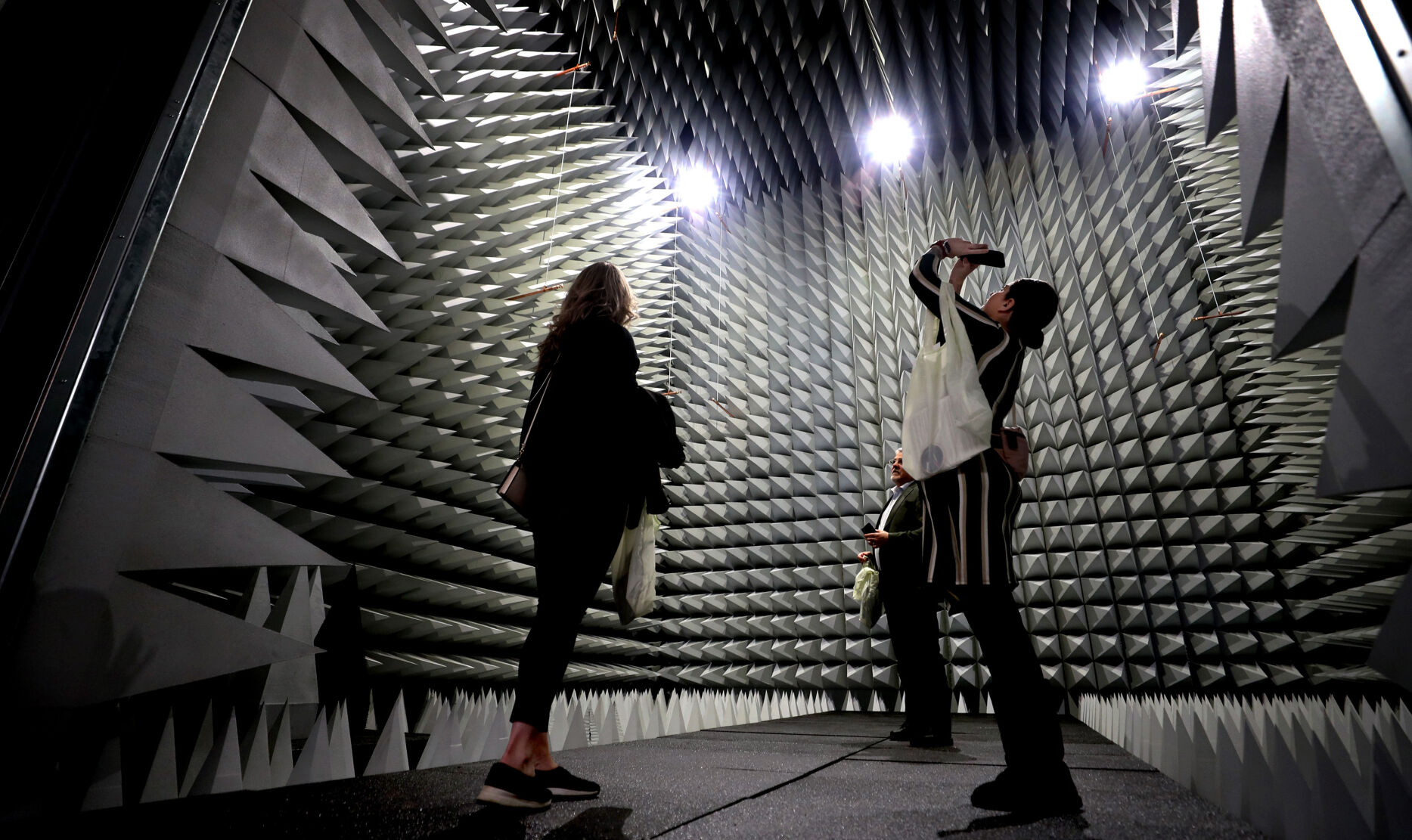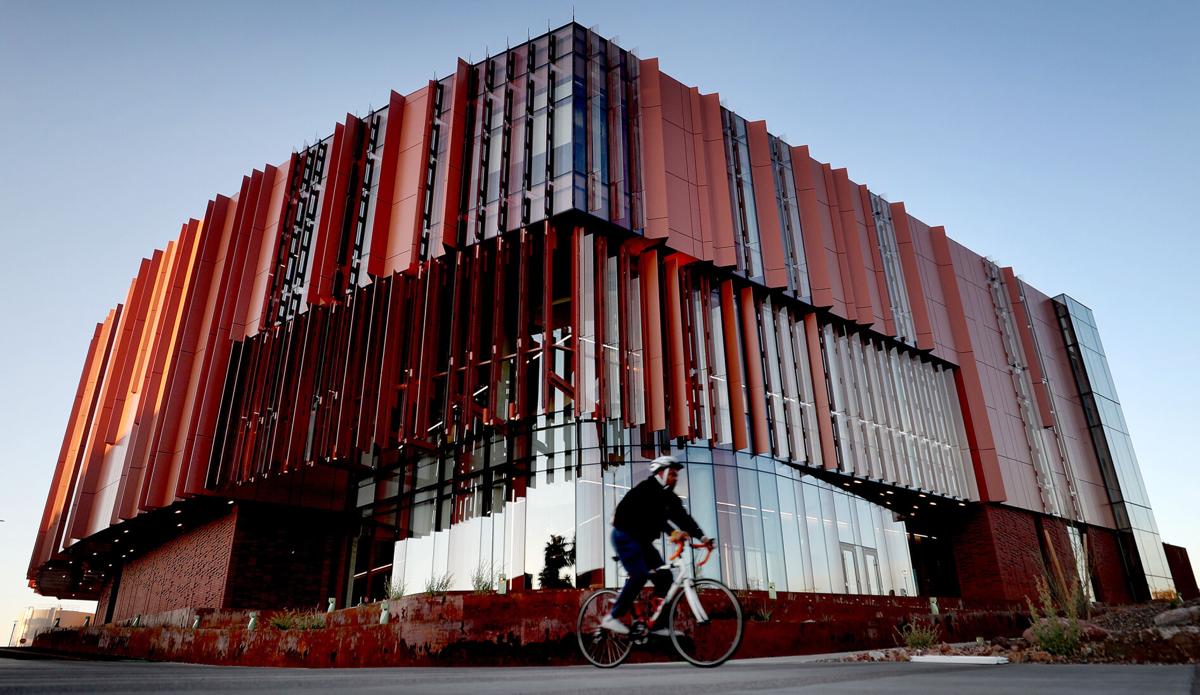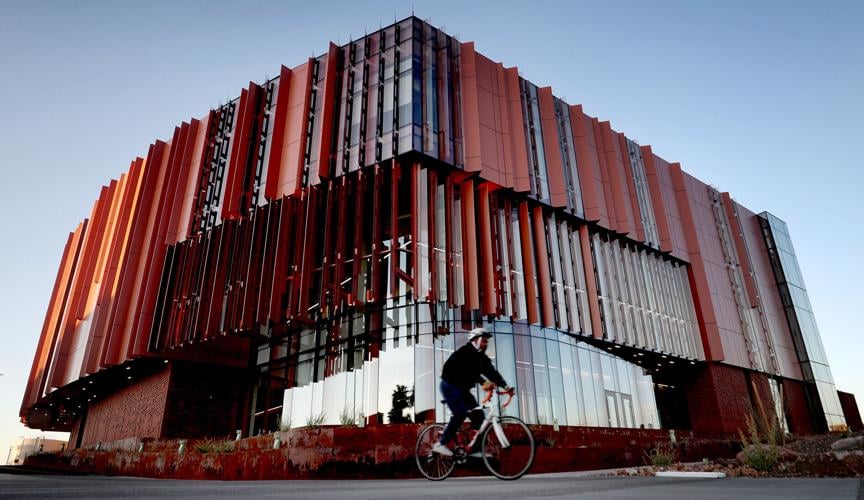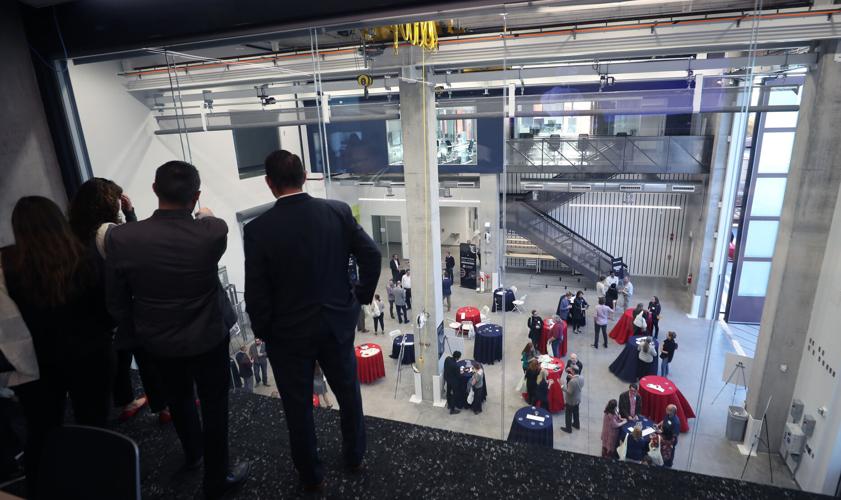After nearly two years of construction, the University of ĂŰčÖÖą˛Ľâs $85 million is open.
When faculty, researchers and students start moving in, they will be working in an environment designed for interdisciplinary collaboration.
Eight departments among four colleges â the College of Engineering, College of Science, the James C. Wyant College of Optical Sciences and the College of Medicine-ĂŰčÖÖą˛Ľ â will have dedicated space there.

Inside the Anechoic Chamber during an open house of the Applied Research Building at the University of ĂŰčÖÖą˛Ľ on Wednesday. The chamber is designed to dampen radio waves and allow the testing of antennae. Metal sheeting forms a Farady cage and shields radio waves from inside the chamber.
Additionally, the UA Space Instituteâs headquarters will be in the Applied Research Building.
âWhile todayâs research is primarily led by individual investigators â academics who are also spending a large portion of their time teaching, tomorrowâs research will be largely led by interdisciplinary, multi-sector teams including industry, government, and civil society, and pressing societal challenges will drive research pursuits,â Betsy Cantwell, UAâs senior vice president of research and innovation, said at Wednesdayâs grand opening.
People are also reading…
The three-story, 89,000-square-foot space is at 1420 E. Helen St.
McCarthy Building Companies broke ground on the project in July 2021, and the architectural design was by Phoenix-based SmithGroup, under the management of UA Planning, Design and Construction.
One of the signature design features is that the building houses state-of-the-art technologies meant to aid in scientific innovation. Those include a high-bay payload laboratory, an anechoic chamber, and a large-scale thermal vacuum chamber.

The High Bay Facility from inside the Mission Ops Center during the grand opening of the new Applied Research Building at the University of ĂŰčÖÖą˛Ľ. The bay has 40-foot ceiling to accommodate the assembly, testing and storage of high-altitude balloons.
The vacuum chamber can be used to replicate outer space conditions, and itâs the largest chamber of its kind at any university in the world, according to a UA news release.
UA says facilities throughout the building will help advance the universityâs status as an R1 institution, which means it receives public and private funding to support academic research across a spectrum of fields.
âInfrastructure such as the ARB is an investment in the future of not only the University of ĂŰčÖÖą˛Ľ as one of the nationâs top R1 research institutions,â Cantwell said, âbut also an investment in the future of science and technology and of society at large.â
Photos: Opening of the Applied Research Building at the University of ĂŰčÖÖą˛Ľ

Guests walk through the lobby for an open house to celebrate the opening of the new Applied Research Building at the University of ĂŰčÖÖą˛Ľ, ĂŰčÖÖą˛Ľ, Ariz., April 5, 2023. The ARB is three stories, 89,000 squared feet, cost $85 million and designed to centralize three university interdisciplinary programs. Among the facilities in the ARB are the Payload High Bay, the Anechoic Chamber, the Thermal Vacuum Chambers, the Mission Ops Center, Space Curation Facility, Cubesat Laboratory, Laboratory for Advanced & Additive Manufacturing and the Imagine Technology Laboratory.

Guest get photos from inside the Anechoic Chamber during an open house to celebrate the opening of the new Applied Research Building at the University of ĂŰčÖÖą˛Ľ, ĂŰčÖÖą˛Ľ, Ariz., April 5, 2023. The chambers is built to dampen radio waves and allow the testing of antennae. Metal sheeting forms a Farady cage and shields radio waves from inside the chamber.

Chris Richards gets a look at the door to the Thermal Vacuum Chamber for an open house to celebrate the opening of the new Applied Research Building at the University of ĂŰčÖÖą˛Ľ, ĂŰčÖÖą˛Ľ, Ariz., April 5, 2023. The chamber is designed to create vacuum pressure as low as 5 torr and reduce the temperature to -315 degrees Fahrenheit, the temperature of liquid nitrogen. The TV chamber is used to test spacecraft and high altitude balloons.

Guests walk by the windows overlooking the Thermal Vacuum Chamber for an open house to celebrate the opening of the new Applied Research Building at the University of ĂŰčÖÖą˛Ľ, ĂŰčÖÖą˛Ľ, Ariz., April 5, 2023. The TV chambers is big enough to hold a pickup truck and weighs 40 tons.

Guests get a look at the Mission Operations Center for an open house to celebrate the opening of the new Applied Research Building at the University of ĂŰčÖÖą˛Ľ, ĂŰčÖÖą˛Ľ, Ariz., April 5, 2023. The center is built to be used by entities monitoring their space craft including balloon operations and NASA Class D missions.

Guest get an overhead look at the High Bay Facility from the windows of the Mission Ops Center for an open house to celebrate the opening of the new Applied Research Building at the University of ĂŰčÖÖą˛Ľ, ĂŰčÖÖą˛Ľ, Ariz., April 5, 2023. The bay has 40-foot ceiling to accommodate the assembly, testing and storage of high-altitude balloons.

Professor of astrophysics Erika Hamden explains the working of the Mission Ops Center in front of the centerâs video wall for an open house to celebrate the opening of the new Applied Research Building at the University of ĂŰčÖÖą˛Ľ, ĂŰčÖÖą˛Ľ, Ariz., April 5, 2023.

Guests get a look at the Space Materials Curation Facility for an open house to celebrate the opening of the new Applied Research Building at the University of ĂŰčÖÖą˛Ľ, ĂŰčÖÖą˛Ľ, Ariz., April 5, 2023. The facility houses rocket body paint samples, mylar, solar cells and other substances used to build and coat space craft.

The new Applied Research Building at the University of ĂŰčÖÖą˛Ľ, ĂŰčÖÖą˛Ľ, Ariz., April 5, 2023.
Dr. Michael Dake, senior vice president for the University of ĂŰčÖÖą˛Ľ Health Sciences, describes the UA's vision for developing cutting-edge immunotherapy research.
Kathryn Palmer covers higher education for the ĂŰčÖÖą˛Ľ. Contact her via e-mail at kpalmer@tucson.com or her new phone number, 520-496-9010.











